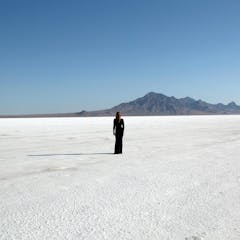
Articles on Glaciers
Displaying 1 - 20 of 111 articles

An estimated 13 trillion litres of ice has already been lost from glaciers in New Zealand’s Southern Alps since 1978. Several are now approaching extinction.

Image of the majestic creatures remain powerful communicators of humanity’s connection with nature.

Scientists now have a better understanding of the risks ahead and a new early warning signal to watch for.

Sarah Nance uses geologic data and a variety of artistic media to help people think about their place in the landscapes they use and occupy.

Pine Island Glacier passed a tipping point decades ago, and it could do again in the future.

The world is on track to exceed 2°C warming within the next five years, with dire consequences for polar ice, mountain glaciers and permafrost – and human society.

If this case succeeds, it could set a precedent to hold major polluters responsible for the effects of climate change – even on the other side of the world.

Humanity has lost control of West Antarctic ice-sheet melting.

Alaska has at least 120 glacier-dammed lakes, and almost all have drained at least once since 1985, a new study shows. Small ones have been producing larger floods in recent years.

Like icy thermometers, glaciers overlying volcanoes shift according to temperature changes below.

Some of the world’s biggest glaciers flow into fjords in Greenland and we need to know what they’ll bump into on the seabed.

At the pilgrimage site of Kedarnath in northern India, disastrous flooding has led many to ask whether the gods are getting angry about human behavior.

Climate change is causing increasingly severe weather – but it’s not just hazards at the Earth’s surface we should be concerned about.

Glaciologists are discovering new ways surface meltwater alters the internal structure of ice sheets, and raising an alarm that sea level rise could be much more abrupt than current models forecast.

Icebergs don’t just pose a risk to ships – they have a profound impact on the natural world and human societies.

To fully understand the extent of climate-related dangers the Arctic – and our planet – is facing, we must focus on organisms too small to be seen with the naked eye.

Temperature rise of more than 1°C pushes us towards irreversible climate tipping points, yet Earth is 1.2°C warmer than in pre-industrial times.

Meltwater rivers in the European Alps will change as glaciers melt – threatening animals that are vital for alpine ecosystems with habitat loss.

Seafloor landforms reveal that ice sheets can collapse at 600 metres per day.

Scientists used satellites to map tens of thousands of glacial landforms in Antarctica’s highest mountains.
